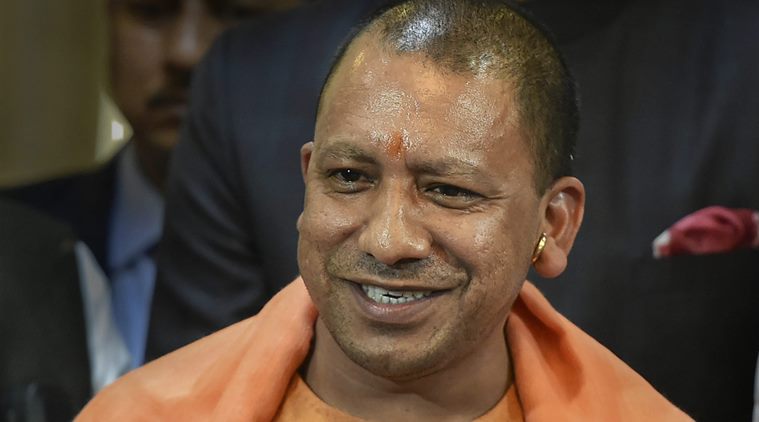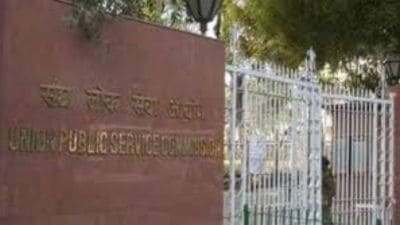- India
- International
Of Statues Big And Small
In history and scripture, UP CM will find little basis to build a giant statue of Lord Ram. Then the invaders arrived in waves through the Hindukush pass and the force of Islam collided with the immovable presence of the local faith. The post-10th century period saw a period of hot clashes and cold fusion.
 Idol worship has a long and convoluted history.
Idol worship has a long and convoluted history.
In his letter to Uttar Pradesh Chief Minister Yogi Adityanath on the proposed installation of an enormous statue of Lord Ram on the banks of the Sarayu in Ayodhya, veteran parliamentarian Karan Singh, one of the most well-informed public figures on Hinduism, makes an interesting point. Lord Ram, he writes, is traditionally always depicted accompanied by his wife, Sita. And the couple is always referred to as Sita- Ram, or Siya-Ram. Why must Ram’s statue, then, be installed without his wife? Sita was unjustly banished from Ayodhya on the basis of a nasty public rumour. She proved she was right and chose to return to mother earth. Do we want to repeat the mistake and banish her once again?
Idol worship has a long and convoluted history. Vedic verses offer prayers to various anthropomorphic forces like the Usha (dawn), Vayu (wind), Agni (fire) and Indra. They create divine imagaries of these celestial beings but there is no physical proof that they actually created idols and/or housed them in temples for public worship. The supposed icons of Shiva as Pashupati from Mohenjo Daro and Harappa are icons, not statues. There is proof, however, that in the area around present day Mathura, right up to Kashi, Yaksha pooja existed. It pre-dated Buddhism, Hinduism and Jainism. And surprise, surprise, it was the Mahayana branch of Buddhists who first caught on to the trend from the Yaksha worshippers and created some of the most beautiful images of the Buddha and the Bodhisattva using the (hybridised) Greco-Indian Gandhara techniques. The trend caught on fast and soon, sculptors in far away Orissa were producing beautiful images of the Bodhisattva with the Jains following suit with statues of their 24 Teerthankaras.
The Hindus still bided their time. Interestingly, Manu frowned on the worshipping of statues and ruled that Devlok Brahmin (one performs pooja rituals for statues in exchange for alms) should not be called for a Shraddha ceremony as he has deviated from the basic duty of a Brahmin to teach and learn. But the Buddhists utilised the art to decorate some 84,000 stupas built by emperor Ashoka. The gateways and ornamental friezes of the few surviving Buddhist stupas bear the buxom figures of nameless Yakshis oozing oomph.
With the Guptas, around the 4th century, Mathura and Sarnath became centres for producing sculpted images of Vishnu and his various forms, that were housed within simple brick temples, like the one that has survived in Devgarh on the banks of the Betwa river near Jhansi. After the Adi Shankaracharya declared around the 8th century that man is not limited to this mortal body, but he is Brahman himself, within a short while larger-than-life statues of gods began to be created. The eminent art historian Vasudev Sharan Agrawal writes this was also the time when not just statues but everything associated with divine worship began to grow. The temples began to imitate the holy mountain peaks (Meru, Kailasa), fire rituals (yagnas) like the Ashwamedha became elaborate and were depicted on special coins minted for the occasion, ritualistic donations acquired grander names.
Then the invaders arrived in waves through the Hindukush pass and the force of Islam collided with the immovable presence of the local faith. The post-10th century period saw a period of hot clashes and cold fusion. Even the

number of local deviant sects that dismissed Vedic ritualism and largely ignored the pantheon of Hindu gods grew. It produced a backlash that Atal Bihari Vajpeyi described as kriya ki pratikriya, the reaction to an action. This, interestingly, produced coalitions of the gods. Thus, in the Trikutachal temples, Brahma, Vishnu and Mahesh, now shared the same vast and protected courtyard.
It is now that we also begin to find clearer instructions about the making and installation of statues of specific Hindu gods, in anthologies like Varahmihira’s. He wrote that the learned ones and the yogis know their gods are in heaven, for the less knowledgeable they reside in idols made of wood or clay. The Matsya Purana is more detailed: It says the ones worshipped domestically can be of a size of a thumb and at the most 12 fingers high, but in temples they can be up to 16 fingers in height.
Interestingly there is no reference to installation of a large statue of a god out in the open. True, in some parts of India (Badrinath Dham in Kulu or Jagannath Puri), the gods go out of the temples for a brief spin or a limited sojourn to another temple. Sometimes (as after the Navratri) a biodegradable idol is worshipped in a special protected alcove with an awning for a mandated period and then immersed in running waters), but leaving a large divine idol out under the skies is not an option at any point.
The writer is a senior journalist
40 Years Ago
EXPRESS OPINION
More Explained
Apr 16: Latest News
- 01
- 02
- 03
- 04
- 05









































